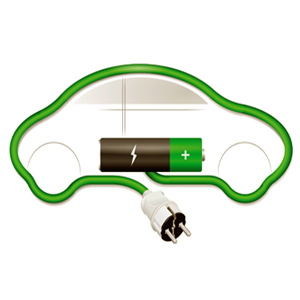Whether you’re looking for eye-catching infographics or informative smart grid presentations, odds are if you’ve Googled it the lion’s...
You are here
Recharging the Electric Vehicle Market

Why the fate of the electric car hinges on consumers’ ability to plug in.
Electrical vehicles have grown in popularity over recent years due to increasing gas prices and a thirst for U.S. energy independence. But with a variety of electric vehicles already on the market, why haven’t innovative cars like the Nissan Leaf or Tesla Model S become ubiquitous sights at every stoplight?
The short answer: consumers have limited options to recharge their vehicles. For decades, our transportation economy has been built around convenient access to gasoline and diesel stations. Making the challenge for EV's not simply about cost differentials, but accessibility to nationwide recharging stations.
President Obama’s goal for 2015 is 1 million electric cars on the road, but if we plan on hitting those lofty goals, it will require far more than a few extra charging stations. Widespread electric vehicle adoption will call for serious adjustments to our transportation infrastructure.
Without a Socket
Electric vehicles have yet to compete with the range of standard gas-fueled cars. The majority of EV charging needs to be done overnight. Even with an upgraded 240-volt outlet, a standard battery takes 4-8 hours to charge. It is recommended that homeowners invest in home charging stations but high price barriers make it increasingly challenging. And even in large buildings, it’s difficult for landlords to make these kinds of investments when only a few tenants drive electric vehicles.
According to a Carnegie Mellon University study, less then half of electric car owners are without consistent access to overnight charging. If electric car owners cannot conveniently charge their cars, manufacturers and politicians have an uphill battle to drive EV adoption.
A Rechargeable Future
Some states acknowledge these issues and have begun passing legislation. California, Connecticut, Maryland, Massachusetts, New York, Oregon, Rhode Island, and Vermont collaborated and announced last month that they are requiring installation of chargers at workplaces, multi-family apartments and at other locations.
Walgreens has offered its own private sector solution, installing charging stations at 800 of its locations – with chargers that deliver as much as 30 miles in 10 minutes. Both of these measures are positive strides toward widespread EV adoption, but considerable progress still needs to be made.
Whether the public or private sectors choose to take the lead, the future of electric vehicles hangs in the balance of convenience. Until it’s just as easy to recharge as it is to refuel, electric vehicles will continue to be held down by their limited range and high price tags.
Produced by Dan Spethmann
